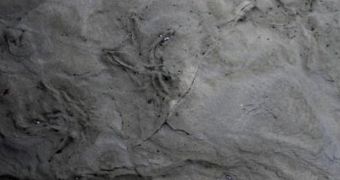If it is true that the early bird catches the worm, then there is little denying that birds that lived in present-day Australia 100 million years ago gulped down their fair share of creepy crawlers.
A new paper in the journal Paleontology details the discovery of 100-million-year-old fossilized bird footprints at Dinosaur Cove in Victoria, Australia.
These fossilized tracks are the oldest of their kind to have thus far been discovered in this part of the world. Judging by their shape, it is likely that, millions of years ago, this patch of land served as a landing track for birds.
As specialist Anthony Martin explains, the land “has a beautiful skid mark from the back toe dragging in the sand, likely caused as the bird was flapping its wings and coming in for a soft landing.”
The birds that made them are believed to have been roughly the size of a great egret or a small heron, EurekAlert tells us.
At the time when these footprints were made, i.e. during the Early Cretaceous, this area was crisscrossed by several rivers and their valleys, and temperatures were fairly low. Specifically, the local climate was a polar one.
Commenting on these findings, paleontologist Anthony Martin with the Emory University in Atlanta said that, “These tracks are evidence that we had sizeable, flying birds living alongside other kinds of dinosaurs on these polar, river floodplains, about 105 million years ago.”
Researchers hope that, by studying the shape of the footprints, they will be able to gain a better understanding of the evolution of flight.

 14 DAY TRIAL //
14 DAY TRIAL //